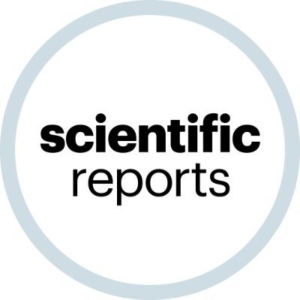Antarctic fungi with antibiotic potential isolated from …
Antarctic fungi with antibiotic potential isolated from Fort William Point, Antarctica

Abstract
The Antarctic continent is one of the most inhospitable places on earth, where living creatures, mostly represented by microorganisms, have specific physiological characteristics that allow them to adapt to the extreme environmental conditions. These physiological adaptations can result in the production of unique secondary metabolites with potential biotechnological applications. The current study presents a genetic and antibacterial characterization of four Antarctic fungi isolated from soil samples collected in Pedro Vicente Maldonado Scientific Station, at Fort William Point, Greenwich Island, Antarctica. Based on the sequences of the internal transcribed spacer (ITS) region, the fungi were identified as Antarctomyces sp., Thelebolus sp., Penicillium sp., and Cryptococcus gilvescens. The antibacterial activity was assessed against four clinical bacterial strains: Escherichia coli, Klebsiella pneumoniae, Enterococcus faecalis, and Staphylococcus aureus, by a modified bacterial growth inhibition assay on agar plates. Results showed that C. gilvescens and Penicillium sp. have potential antibiotic activity against all bacterial strains. Interestingly, Thelebolus sp. showed potential antibiotic activity only against E. coli. In contrast, Antarctomyces sp. did not show antibiotic activity against any of the bacteria tested under our experimental conditions. This study highlights the importance of conservation of Antarctica as a source of metabolites with important biomedical applications.
Introduction
The Antarctic continent is the coldest desert on Earth and contains nearly 90% of Earth’s ice1. The climatic characteristics of this hostile environment include: temperatures below 0 °C, freezing and melting seasons, high UV radiation, arid conditions, and scarcity of nutrients2,3,4. Despite these harsh conditions, diverse groups of organisms have colonized the continent, with the microbiota (i.e. bacteria, archaea, and fungi) contributing to the most abundant biomass5,6. Among these, the Antarctic fungi are represented by endemic, native and cosmopolitan species, adapted to the cryosphere7,8,9,10.
Initial reports of Antarctic fungi were in the early twentieth century, and more than 1000 non-lichenized fungal species had been reported in this continent11. Nowadays, metagenomics and metabarcoding provide a pivotal contribution to biodiversity surveys in this continent and its sub-Antarctic islands12,13,14,15. Recent reports have described new mycological species in the maritime Antarctica region. Rosa and collaborators12 used metabarcoding to analyze fungal diversity in soil samples from Deception Island (South Shetland Islands). However, a significant number of sequences were only grouped at the Kingdom taxonomic level12. Similarly, a recent study sequenced 184 fungal taxa from the Antarctic Peninsula and South Shetland Islands, of which 37 taxa were detected for the first time in Antarctica; among maritime sampling sites, Greenwich Island showed more mycological diversity13.
Studies related to the diversity of fungi in Antarctica are essential to characterize Antarctic microbiology, but also to discover novel fungi metabolites. However, metabolic mechanisms for Antarctic fungi adaptation and their bioprospecting potential is still considered poorly studied16,17,18. Nevertheless, numerous researches expose the potential biotechnological applications of this kingdom, particularly in biomedicine19,20,21. This is likely due to their specialized metabolic adaptation that includes high catalytic activity at low temperatures, extracellular enzyme production, synthesis of antifreeze protein and elevated unsaturated fatty acids, among others22,23. Unique metabolic properties such as these result in the production of diverse secondary metabolites that are mainly regulated by internal24,25 and external environmental factors26 (e.g., sexual stage, luminous intensity and pH). Thus, the extreme environment of the Antarctic continent is thought to contribute to the development of distinctive metabolites with potential antimicrobial properties that can lead to the discovery of new antibiotics27.
The discovery of novel compounds with bioactivity is crucial to face the increasing threat of multidrug-resistant (MDR), pandemic drug-resistant (PDR) and extensively drug-resistant bacteria (XDR)28, a major public health concern. To this end, microorganisms like Streptomyces coelicolor, Amycolatopsis orientalis and Penicillium chrysogenum have become valuable bioresources for the production of antibiotics29,30,31. Important medical compounds, such as beta-lactam penicillin, benzopyrenes, macrolides, and alkaloids have been isolated from fungi32,33. Fungi from polar regions represent a source of novel metabolites, with unique biomolecules that evolved under selective pressure34. Cold-adapted fungi showed antibacterial potential35,36,37,38, with distinctive structure and biological activity39. It is considered that new drugs derived from them may be currently understudied34, as expression of these compounds might be linked to environmental cues that are challenging to emulate under standard laboratory growth conditions40,41.
The present study shows the genetic, morphology and antibacterial characterization of four Antarctic fungi isolated from soil samples collected at Fort William Point, Greenwich Island, Antarctica. The phylogenetic analysis was based on sequences of the internal transcribed spacer (ITS) region and their potential antibacterial activity was assessed by a modified bacterial growth inhibition assay on agar plates.
Details
Publication status:
Press releases – Climate Change
Date:
12 December 2022
Journal/Source:
Scientific Reports / www.nature.com




Leave a Reply
Want to join the discussion?Feel free to contribute!